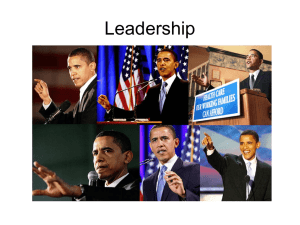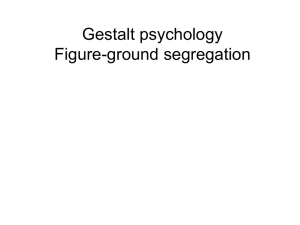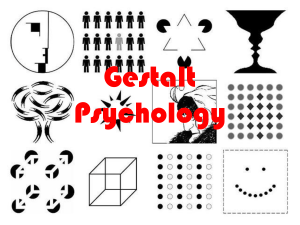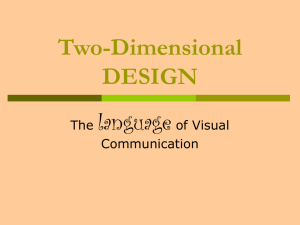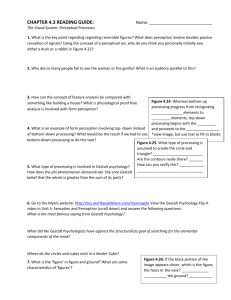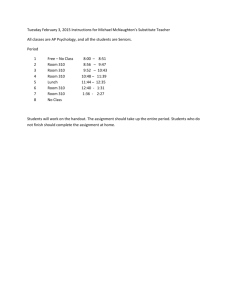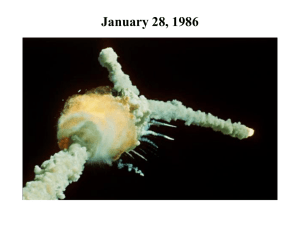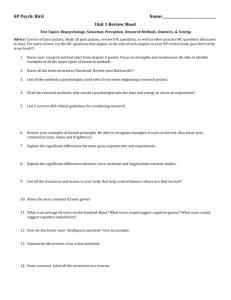gestalt explanation (Page 1)
advertisement
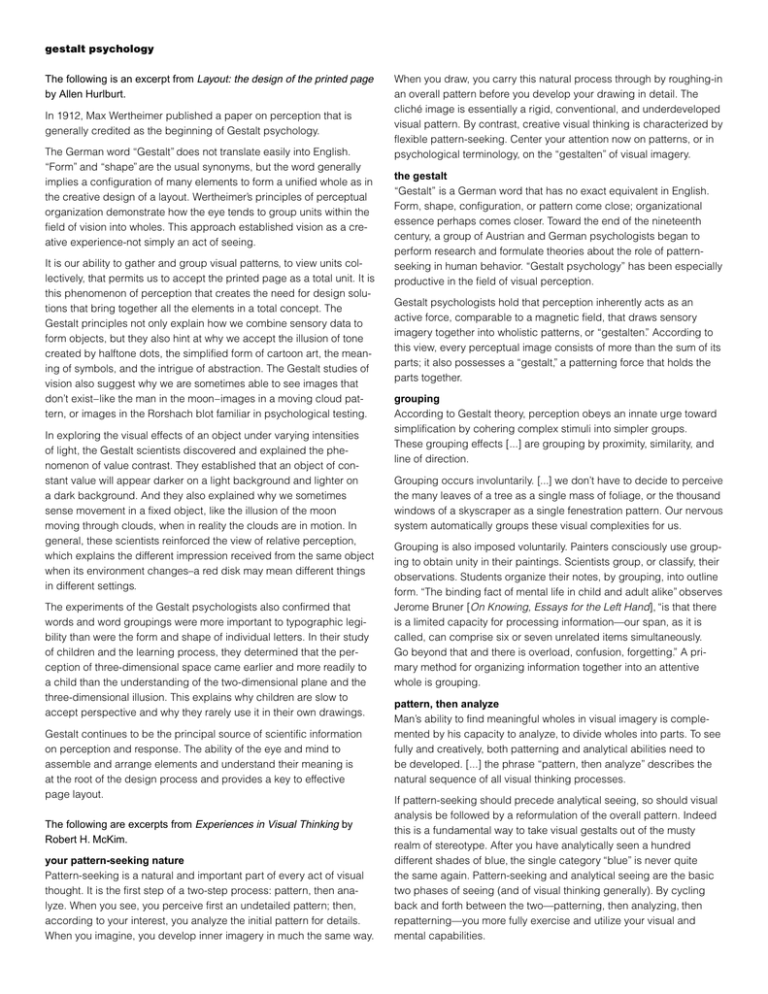
gestalt psychology The following is an excerpt from Layout: the design of the printed page by Allen Hurlburt. In 1912, Max Wertheimer published a paper on perception that is generally credited as the beginning of Gestalt psychology. The German word “Gestalt” does not translate easily into English. “Form” and “shape” are the usual synonyms, but the word generally implies a configuration of many elements to form a unified whole as in the creative design of a layout. Wertheimer’s principles of perceptual organization demonstrate how the eye tends to group units within the field of vision into wholes. This approach established vision as a creative experience-not simply an act of seeing. It is our ability to gather and group visual patterns, to view units collectively, that permits us to accept the printed page as a total unit. It is this phenomenon of perception that creates the need for design solutions that bring together all the elements in a total concept. The Gestalt principles not only explain how we combine sensory data to form objects, but they also hint at why we accept the illusion of tone created by halftone dots, the simplified form of cartoon art, the meaning of symbols, and the intrigue of abstraction. The Gestalt studies of vision also suggest why we are sometimes able to see images that don’t exist–like the man in the moon–images in a moving cloud pattern, or images in the Rorshach blot familiar in psychological testing. In exploring the visual effects of an object under varying intensities of light, the Gestalt scientists discovered and explained the phenomenon of value contrast. They established that an object of constant value will appear darker on a light background and lighter on a dark background. And they also explained why we sometimes sense movement in a fixed object, like the illusion of the moon moving through clouds, when in reality the clouds are in motion. In general, these scientists reinforced the view of relative perception, which explains the different impression received from the same object when its environment changes–a red disk may mean different things in different settings. The experiments of the Gestalt psychologists also confirmed that words and word groupings were more important to typographic legibility than were the form and shape of individual letters. In their study of children and the learning process, they determined that the perception of three-dimensional space came earlier and more readily to a child than the understanding of the two-dimensional plane and the three-dimensional illusion. This explains why children are slow to accept perspective and why they rarely use it in their own drawings. Gestalt continues to be the principal source of scientific information on perception and response. The ability of the eye and mind to assemble and arrange elements and understand their meaning is at the root of the design process and provides a key to effective page layout. The following are excerpts from Experiences in Visual Thinking by Robert H. McKim. your pattern-seeking nature Pattern-seeking is a natural and important part of every act of visual thought. It is the first step of a two-step process: pattern, then analyze. When you see, you perceive first an undetailed pattern; then, according to your interest, you analyze the initial pattern for details. When you imagine, you develop inner imagery in much the same way. When you draw, you carry this natural process through by roughing-in an overall pattern before you develop your drawing in detail. The cliché image is essentially a rigid, conventional, and underdeveloped visual pattern. By contrast, creative visual thinking is characterized by flexible pattern-seeking. Center your attention now on patterns, or in psychological terminology, on the “gestalten” of visual imagery. the gestalt “Gestalt” is a German word that has no exact equivalent in English. Form, shape, configuration, or pattern come close; organizational essence perhaps comes closer. Toward the end of the nineteenth century, a group of Austrian and German psychologists began to perform research and formulate theories about the role of patternseeking in human behavior. “Gestalt psychology” has been especially productive in the field of visual perception. Gestalt psychologists hold that perception inherently acts as an active force, comparable to a magnetic field, that draws sensory imagery together into wholistic patterns, or “gestalten.” According to this view, every perceptual image consists of more than the sum of its parts; it also possesses a “gestalt,” a patterning force that holds the parts together. grouping According to Gestalt theory, perception obeys an innate urge toward simplification by cohering complex stimuli into simpler groups. These grouping effects [...] are grouping by proximity, similarity, and line of direction. Grouping occurs involuntarily. [...] we don’t have to decide to perceive the many leaves of a tree as a single mass of foliage, or the thousand windows of a skyscraper as a single fenestration pattern. Our nervous system automatically groups these visual complexities for us. Grouping is also imposed voluntarily. Painters consciously use grouping to obtain unity in their paintings. Scientists group, or classify, their observations. Students organize their notes, by grouping, into outline form. “The binding fact of mental life in child and adult alike” observes Jerome Bruner [On Knowing, Essays for the Left Hand], “is that there is a limited capacity for processing information—our span, as it is called, can comprise six or seven unrelated items simultaneously. Go beyond that and there is overload, confusion, forgetting.” A primary method for organizing information together into an attentive whole is grouping. pattern, then analyze Man’s ability to find meaningful wholes in visual imagery is complemented by his capacity to analyze, to divide wholes into parts. To see fully and creatively, both patterning and analytical abilities need to be developed. [...] the phrase “pattern, then analyze” describes the natural sequence of all visual thinking processes. If pattern-seeking should precede analytical seeing, so should visual analysis be followed by a reformulation of the overall pattern. Indeed this is a fundamental way to take visual gestalts out of the musty realm of stereotype. After you have analytically seen a hundred different shades of blue, the single category “blue” is never quite the same again. Pattern-seeking and analytical seeing are the basic two phases of seeing (and of visual thinking generally). By cycling back and forth between the two—patterning, then analyzing, then repatterning—you more fully exercise and utilize your visual and mental capabilities.
